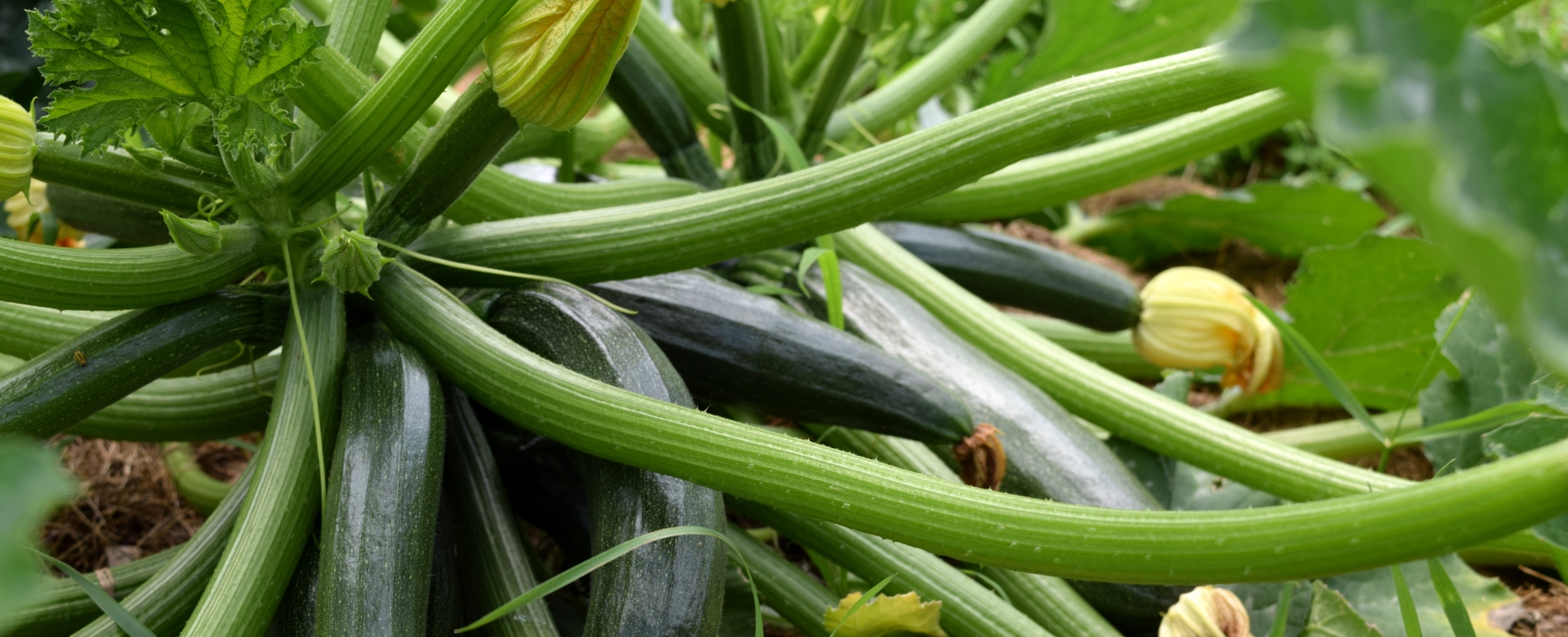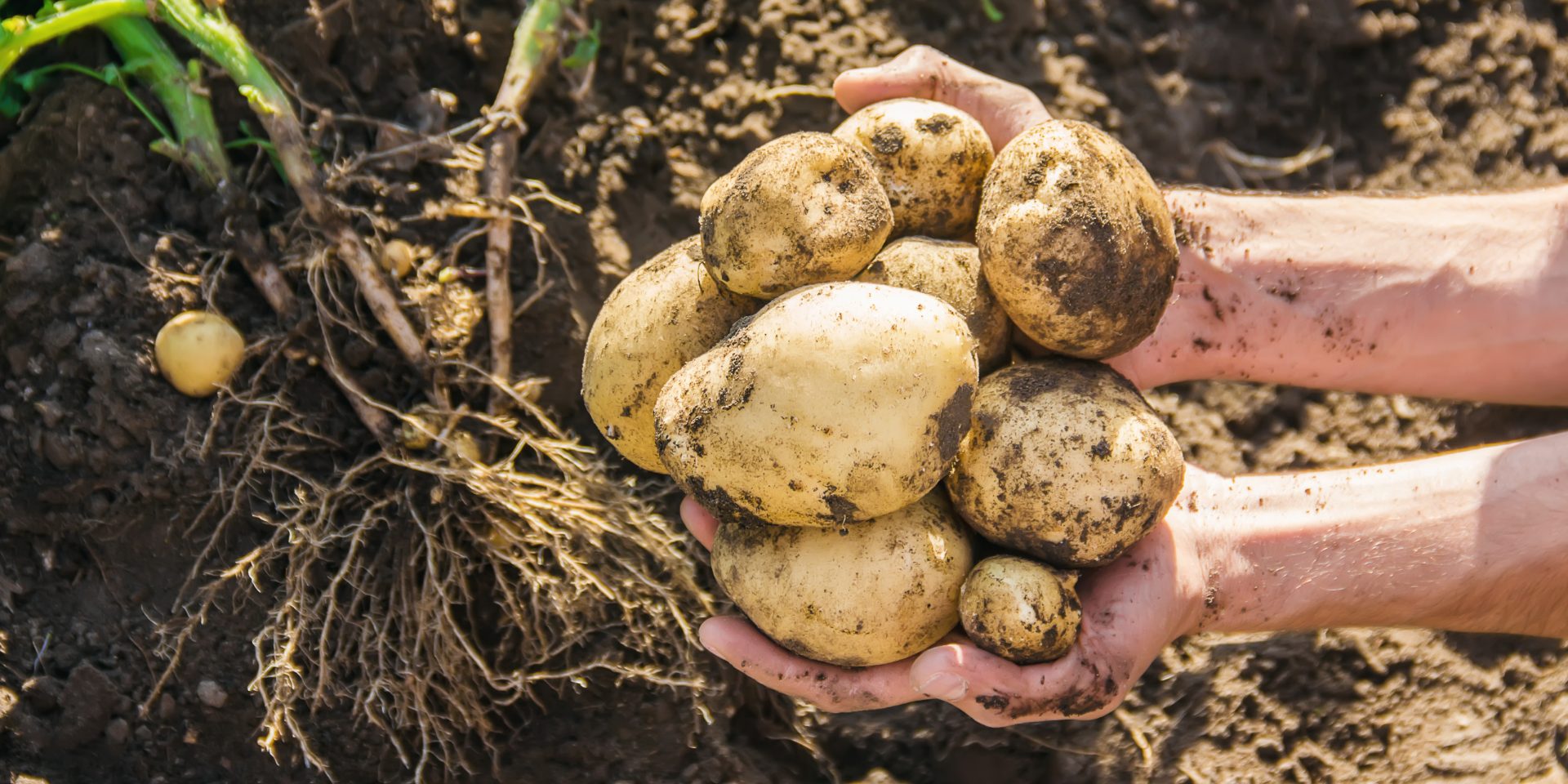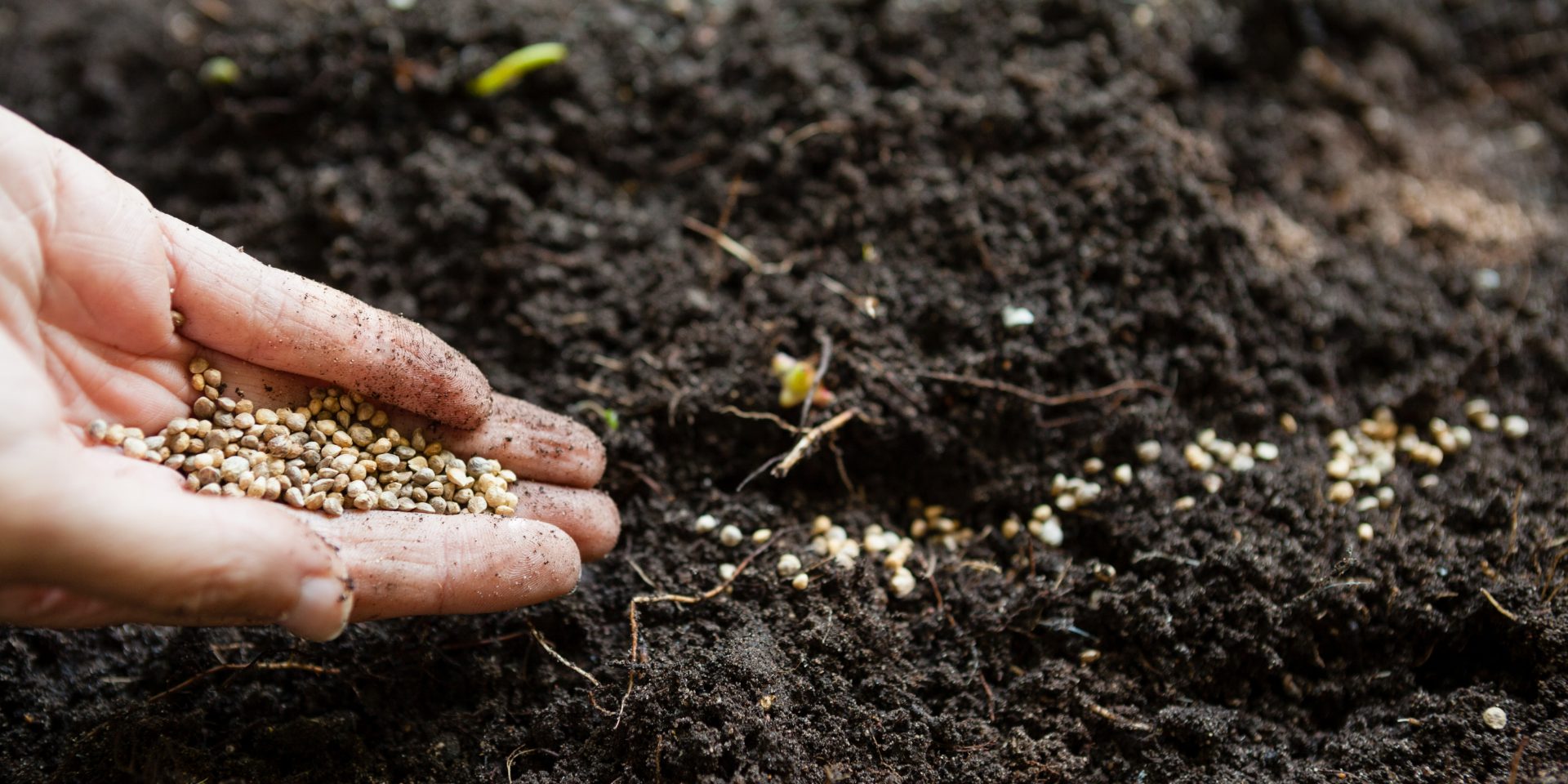Gardeners dread all the work that goes into creating a new flower bed. Rototilling, digging, and hauling away the old soil – it’s extremely labor-intensive. But there’s an approach that might help: No-dig flower gardening.
The no-dig method gets rid of the pesky need for digging or tilling while also enhancing the soil without disturbing it. With this approach, you add layers of organic matter on the surface of the current soil.
A no-dig flower bed mimics natural processes and promotes a stronger soil structure. Additional perks include stronger water retention and a decreased reliance on synthetic fertilizers.
And besides, it’s less work, which means more time to enjoy your garden—and to show it off, of course!
So, what goes into no-dig flower gardening exactly? What are the other benefits? What makes it different than a dig flower bed?
This guide answers those questions and provides step-by-step instructions for creating a no-dig flower bed.
What Is a No-Dig Flower Bed?
No-dig gardening is an approach that doesn’t involve digging or tilling the soil. With a no-dig flower bed, the soil remains undisturbed, and a new bed is created on top of existing vegetation or soil.
This method involves layering organic materials like cardboard, newspaper, and compost over existing grass or soil. This eradicates weeds and existing vegetation and creates a sterile bed for flowers. When done correctly, no-dig gardening increases soil fertility.
Advantages of a No-Dig Flower Bed
No-dig garden beds are well-liked by gardeners, and they’re good for the environment. They have many benefits that make them a great choice for gardening, including:
1. Preserves soil structure
A no-till garden preserves soil structures, which allow microorganisms to flourish.
Microorganisms play a major role in:
- Decomposing organic matter
- Enhancing nutrient accessibility
- Safeguarding the soil’s overall health
Maintaining soil structure also results in:
- Less weed pressure
- A boost in soil fertility
- An improvement in drainage
2. Less maintenance
No-dig gardening prevents weed growth through a variety of methods:
- Smothering: Smothering weeds with newspapers or cardboard limits their access to sunlight and air, which kills them.
- Using mulch: Putting in a 2-3-inch layer of mulch prevents most weed seeds from sprouting.
- Less soil disturbance: As there is no need for digging, weed seeds remain undisturbed and never make their way to the surface.
3. Improved water retention and drainage
No-dig gardens use organic matter like sponges and a mulch layer to preserve moisture. This reduces watering requirements. In addition, healthy soil structure increases drainage.
They promote:
- Good soil structure: Macropores develop in undisturbed roots, creating larger channels for water drainage.
- Worm tunnels: No-dig flower beds promote earthworms and microbes, allowing them to develop tunnels and pathways in the soil. This enhances drainage.
- Good root systems: No-dig beds keep the roots of plants undisturbed. This helps them grow deeper and wider. It also makes more paths for water to flow away.
4. Environmental impact of no-dig Gardening
The no-dig approach has a strong impact on the environment, including.
- Promotion of biodiversity and soil health: This type of gardening encourages earthworms and tiny creatures in the soil, making the soil healthy. The variety of life in the soil helps naturally control pests, so there’s no need for synthetic fertilizers.
- Sustainable gardening practices: No-dig gardening cuts down on machinery use and supports local food production thanks to the growth of various flowers and vegetables.
Required Tools and Materials for No-Dig Flower Beds
Look in your garage! You probably already have the tools and materials to make a no-till garden.
Here’s a list of supplies you’ll need:
Tools:
- Garden fork
- Garden gloves
- Pruners
- Rake
- Watering can
- String line (or spray paint)
- Trowel
- Garden cart
Materials:
- Cardboard (or newspaper)
- Compost: Enhances soil structure and nourishes flowers)
- Wood chips (or bark or straw): Controls weeds, preserves moisture, and moderates soil temperature
- Trowel
How to Make a No-Dig Flower Bed: A Step-by-Step Guide
1. Choose the location
Choosing the location to create your no-dig flower bed is key. Before you decide on a place, ask yourself these questions:
- Does the spot have adequate sun?
- Does it have good drainage?
- Will the wind be too strong?
- Can I get to the spot easily to water, weed, and take care of it?
Your location should suit the types of plants that you select. For example, you might choose shade-loving flowers for a partial-shade flower bed.
2. Remove existing vegetation
Existing vegetation will need to be removed when preparing a new bed. Should you be dealing with woody material, you might need pruners or even a saw.
To do this, you will do a process known as smothering:
-
- Lay down cardboard or newspaper
Put multiple layers of newspaper/cardboard over the soil and plants. Use at least 5-10 sheets.
Don’t use paper with colorful pictures because the dye could cause problems. But regular newspapers won’t harm your soil.
-
- Water the cardboard or newspaper
To hold the cardboard in place and to help it decompose quicker, be sure to thoroughly water the cardboard/newspaper.
-
- Allow decomposition to occur (optional)
For the next two to four months, don’t touch the bed. The newspaper/cardboard you put there will block all light from getting in and this will kill off any existing vegetation.
Note: You don’t have to wait until the newspaper or cardboard is decomposed. However, by waiting, the vegetation below will be completely removed.
3. Add a layer of compost
Put 3 to 4 layers of compost on the cardboard bed. Compost provides important nutrients like nitrogen, phosphorus, and potassium to your plants.
Tip: You don’t have to do this, but you can add a layer of landscape fabric over the compost to help keep weeds away. Just make holes in it for plants.
4. Add a layer of mulch
Put 2-3 inches of organic material, such as wood chips, bark, or straw, on your soil. This will stop weeds from growing, help keep the soil moist, and keep the temperature of the soil steady.
5. Plant your flowers
Choose flowers that are right for your climate and how much sun they will get.
Use a trowel to make holes in the compost layer where you want the flowers to be. Make sure the hole is deep enough for the roots, but not too deep so that it reaches the cardboard or newspaper below.
Put each flower into its hole and fill it with compost.
6. Do edging
Many edging material options are available. For natural materials, you can use bricks, logs, and stones. For manufactured materials, landscape edging (metal, plastic, or wood edging), pavers, and concrete are always options.
- Take out any weeds or rubbish from around the area where you want to put your edging.
- To make sure the edging is in the right place, use string or paint to mark where you want it. That will help you install it, so it looks even.
- When using a material, you need to refer to its specific instructions. They will explain how to use the material correctly.
- Put mulch around the edge of your garden. This will help stop weeds and keep the soil from drying out.
7. Maintain
Maintaining your no-dig flower bed is essential for its long-lasting beauty.
Follow these steps for proper aftercare:
- It goes without saying that watering your plants is very important. Do it regularly. Make sure you water the soil beneath the mulch layer too.
- Be sure to pull out any weeds that push through the mulch from time to time but be careful of the roots.
- Add more mulch around your plants to maintain the moisture and help control temperature.
- Remove any dead flowers to make room for new ones.
How to Maintain Your No-Dig Flower Bed
We talked about the basics of caring for your no-dig flower garden. Now, let’s dive into other ways to maintain your bed:
- Watering guidelines: Use a drip irrigation system or water directly at the base of plants to avoid disturbing the mulch layer.
- Mulch renewal and compost top-ups: Keep the mulch layer fresh to control weeds and retain moisture. Add a thin yearly compost layer for improved soil fertility.
- Dealing with pests and diseases: Check your plants often for any signs of bugs or diseases. Use natural ways to control pests, like companion planting or bringing in bugs that are good for your plants.
- Avoid disturbing the soil: Don’t dig or disturb the soil to keep the no-dig setup intact. Handpick weeds rather than using tools that will disturb them.
- Promote biodiversity: Bring in different plants to attract helpful bugs and keep a balanced environment. Change the crops you plant to prevent specific pests or diseases from becoming too common.
- Regular inspection: Check your flower bed regularly for any signs of nutrient problems. Fix issues quickly to keep your garden healthy and lively.
Dig vs No-Dig Gardening
When deciding between a tilled flower bed and a no-dig one, the choice comes down to your unique requirements and personal preferences.
There are some main differences to consider:-
Soil Disturbance
Digging flower beds can disrupt the natural soil structure and harm beneficial organisms. On the other hand, the no-dig method avoids such disturbance, promoting a healthy soil structure and higher organic matter content.
Weed Pressure
Digging can bring buried weeds to the surface, encouraging germination. To prevent weed growth, the no-dig method involves smothering them with cardboard or newspaper and using mulch layers.
Watering Requirements
Traditional digging creates looser soil, leading to quick water drainage. In contrast, the no-dig approach absorbs and retains water better, reducing the need for frequent watering.
Pros and Cons of a Dig Flower Bed
Below, we provide further detail regarding the dig flower bed method:
Pros
- Flexible: Digging allows you to change the soil and make it better suited for plants.
- More precise planting: Digging helps you plant your flowers exactly how you want them. This makes sure they are in the best condition to grow well.
- Quicker growth: Planting seeds and young plants directly in the soil helps them sprout and grow roots faster.
Cons
- More labor: Due to digging, there’s more energy and time required for gardening. This type of gardening is not ideal for gardeners on a time crunch.
- Weed germination: Digging up the soil can bring hidden weed seeds to the top, causing more weeds to grow, and you’ll need to keep dealing with them.
- Increase in soil erosion: Digging a lot can make soil easily wash away with rain and wind, possibly causing the loss of important topsoil and nutrients.
Wrapping Up
Creating a no-dig flower bed has many benefits and can save time, effort, and money for gardeners. Not only does it help to maintain moisture, but it also offers the best possible conditions for a wide variety of plants.
Also, you’re in control of the design and composition of your garden. You can enjoy the satisfying feeling you get from creating something beautiful and long lasting with your own two hands.
To get your no-dig garden started, be sure to check out your local Homegrown Outlet location!
FAQs
- Great for beginners: It is a convenient option for gardeners of all levels.
- Healthier soil: No-dig gardening nurtures a lively and balanced soil ecosystem. Having a strong and varied community of organisms is vital for keeping the soil fertile and well-structured. The result? Fewer plant diseases and healthier flowers.
- Save on time and energy: You no longer have to do the demanding tasks of digging, forking, and tilling. Also, the use of mulching and cover crops in a no-dig flower bed significantly reduces the need for weeding, as both help keep weeds away.
Most flowers do well in no-dig gardens. However, certain ones do better due to their high tolerance for minimal soil disturbance and their liking for undisturbed soil structure.
Here are a handful of them:
- Perennials: Cornflower, Lavender, Daylily
- Annuals: Zinnia, sweet alyssum, nasturtium
For laying out cardboard/newspaper during the smothering process, it should be at least 5-10 sheets.
Use 2-3 inches of wood chips, bark, or straw on your soil.




